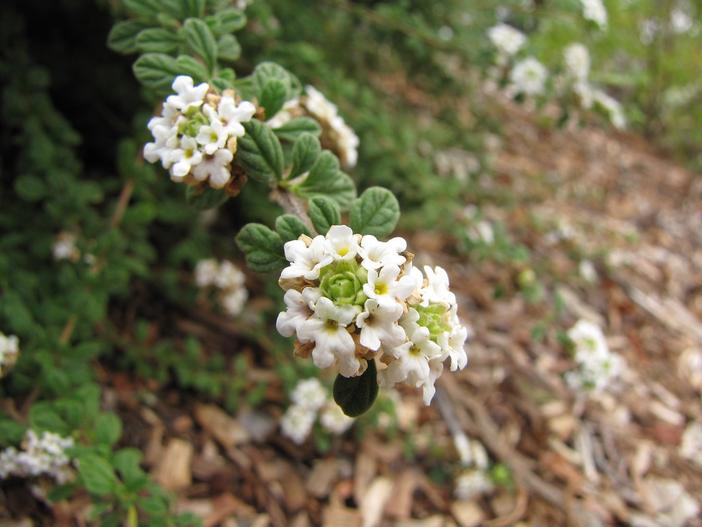Thyme-Leaved Lippia
(Lippia micromera)
Thyme-Leaved Lippia (Lippia micromera)
/
/

Forest and Kim Starr
CC BY 2.0
Image By:
Forest and Kim Starr
Recorded By:
Copyright:
CC BY 2.0
Copyright Notice:
Photo by: Forest and Kim Starr | License Type: CC BY 2.0 | License URL: https://creativecommons.org/licenses/by/2.0/ | Uploader: Starr Environmental | Publisher: Flickr




















Estimated Native Range
Summary
Lippia micromera, commonly known as Thyme-leaved Lippia, is a perennial herb native to the Caribbean, Central and South America, particularly thriving in tropical and subtropical open areas, including savannas and roadsides. It is a low-growing plant, typically reaching up to 1 foot (0.3 meters) in height, with a spreading habit that can cover a significant area if left unchecked. The leaves are reminiscent of thyme in appearance and fragrance, which makes it an attractive choice for herb gardens. The tiny, white flowers are borne in clusters and bloom throughout the year in its native range, adding a subtle charm to the plant’s overall aesthetic.
Thyme-leaved Lippia is appreciated for its culinary uses, as its leaves can be used as a thyme substitute in cooking. It is also noted for its medicinal properties, traditionally used in herbal remedies. In cultivation, it is often utilized as a ground cover or border plant in herb gardens and is valued for its drought tolerance once established. It requires full sun to part shade and prefers well-drained soils. While generally easy to maintain, it can become invasive in favorable conditions, spreading through its roots and overtaking nearby plantings. Gardeners should be aware of its potential to spread and may need to manage its growth accordingly.CC BY-SA 4.0
Thyme-leaved Lippia is appreciated for its culinary uses, as its leaves can be used as a thyme substitute in cooking. It is also noted for its medicinal properties, traditionally used in herbal remedies. In cultivation, it is often utilized as a ground cover or border plant in herb gardens and is valued for its drought tolerance once established. It requires full sun to part shade and prefers well-drained soils. While generally easy to maintain, it can become invasive in favorable conditions, spreading through its roots and overtaking nearby plantings. Gardeners should be aware of its potential to spread and may need to manage its growth accordingly.CC BY-SA 4.0
Plant Description
- Plant Type: Shrub
- Height: 1.6-3.3 feet
- Width: 1.6-3.3 feet
- Growth Rate: Moderate
- Flower Color: White
- Flowering Season: Spring, Summer, Fall
- Leaf Retention: Deciduous
Growth Requirements
- Sun: Full Sun, Part Shade
- Water: Medium
- Drainage: Fast, Medium
Common Uses
Butterfly Garden, Drought Tolerant, Edible*Disclaimer: Easyscape's listed plant edibility is for informational use. Always verify the safety and proper identification of any plant before consumption., Low Maintenance
Natural Habitat
native to the Caribbean, Central and South America, particularly thriving in tropical and subtropical open areas, including savannas and roadsides
Other Names
Common Names: Frogfruit, Matchweed, Puerto Rican Oregano, Spanish Thyme, Turkey Tangle
Scientific Names: , Lippia micromera, Gardoquia origanoides, Gardoquia origanoides, Gardoquia origanoides, Lippia cuneifolia, Lippia helleri, Lippia micromera var. helleri,
GBIF Accepted Name: